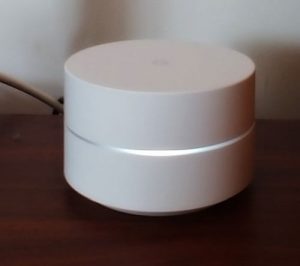 A good WiFi router is essential when using a wireless security camera. Insufficient WiFi coverage will render a wireless camera useless. Problems with wireless routers can stem from the technology being too old or your home being too large. Most wireless routers are made to cover a small to medium size home. Anything above a few thousand square feet is often too large for a regular router. That’s where mesh network system come into the discussion.
A good WiFi router is essential when using a wireless security camera. Insufficient WiFi coverage will render a wireless camera useless. Problems with wireless routers can stem from the technology being too old or your home being too large. Most wireless routers are made to cover a small to medium size home. Anything above a few thousand square feet is often too large for a regular router. That’s where mesh network system come into the discussion.
Mesh Basics
We discussed how to handle a weak WiFi signal a few years ago but times have changed and a mesh system is better way to go. It’s easier to implement, provides better coverage, and may potentially wind up costing less.
WiFi mesh network systems consist of a series of routers linked together to appear as one. They are placed several rooms apart throughout a home or office. The primary WiFi point is attached to the modem via an Ethernet cable. The others are called mesh WiFi points and attach to the primary via the wireless connections. To make things even more interesting, some mesh WiFi points have Ethernet connections to allow direct wired attachment by other devices. This provides an excellent boost for those wanting to improve performance of streaming devices such as a Fire TV.
How many mesh components are needed to properly cover your home or office? First figure out how many square feet of coverage is needed. Include not just the square footage of inside space, but also square footage of outside space, especially if you have outdoor security cameras. Each mesh component covers a certain amount of square footage and they differ by manufacturer. So get that square footage figured out and divide by the amount of coverage per mesh component and that’s the number of mesh routers you will need.
Recommendations
The photo that accompanies this article shows a Google WiFi primary access point in action. This is one of the most popular mesh systems available. Often purchased in kits such as the Google Wifi System (set of 3), these routers (known as pucks) return impressive results with minimal effort. A single puck is needed for every 1500 square feet of coverage. Remember to include any outdoor space in the estimate.
Linking the Google WiFi pucks together is very easy and facilitated by a smartphone app. You need to have a Google ID to use Google WiFi and once authenticated, these stay online – meaning you can check the status, even reboot the network, from anywhere you and your phone are located. Unlike many other network routers, updates are automatically applied to this system. It’s worth mentioning this system covers the 2.4 and 5 GHz bands.
The Google WiFi system is a nice system for those that don’t like to mess around with network settings and in fact, there aren’t many parameters that you can change. For those that prefer to alter their network parameters, consider the Netgear Orbi WiFi System. This is also a three pack and the entire system covers about 5,000 square feet. You can change more network components with this versus the Google WiFi entry. The Netgear Orbi features band steering that uses the 5 GHz band for devices that support that band.
Summary
There are several other brands to select from, but these two come from large companies known to make quality devices and they will be in business years from now when you need support. Proper implementation of a mesh system should result in better coverage and the cost is typically not a lot more than a high quality wireless router.
